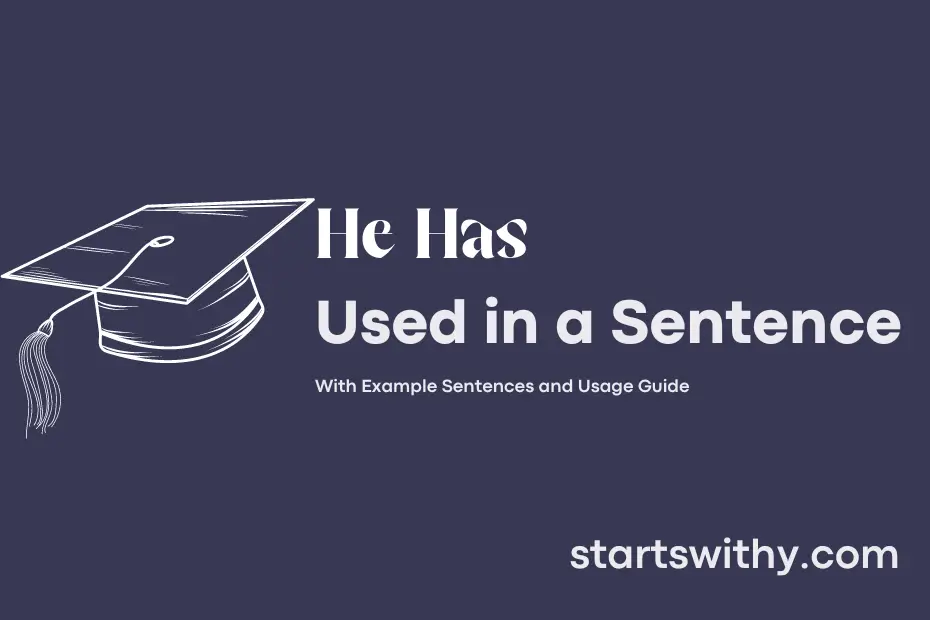Have you ever wondered how to use the phrase “he has” in a sentence correctly? “He has” is a simple verb phrase used to indicate possession or present perfect tense in English grammar.
When constructing a sentence with “he has,” it is important to ensure subject-verb agreement and appropriate context to convey the intended meaning clearly. Whether denoting ownership or describing an action that has been completed recently, the phrase “he has” can add clarity and depth to your writing.
7 Examples Of He Has Used In a Sentence For Kids
- He has a shiny red ball.
- He has a cute little puppy.
- He has a big green kite.
- He has a yummy chocolate bar.
- He has a tall blue hat.
- He has a loud toy car.
- He has a fluffy white teddy bear.
14 Sentences with He Has Examples
- He has a lot of assignments to complete before the deadline.
- He has a hard time balancing his studies and extracurricular activities.
- He has been staying up late to prepare for his exams.
- He has a group project presentation scheduled for next week.
- He has to work on improving his time management skills.
- He has a part-time job to support himself financially.
- He has a strong desire to excel in his academics.
- He has a list of recommended books to read for his courses.
- He has a mentor who guides him through his career choices.
- He has to attend a workshop on soft skills development.
- He has a passion for photography and often participates in college competitions.
- He has to submit his research paper proposal by the end of the month.
- He has signed up for a coding boot camp to enhance his technical skills.
- He has volunteered to organize a college event to gain event management experience.
How To Use He Has in Sentences?
When constructing a sentence using He Has, it is important to remember that it is used to indicate that someone possesses something in the present tense.
Here are some tips on how to correctly use He Has in a sentence:
-
Subject-Verb Agreement: Make sure the subject (he) matches the verb (has) in number. For example, “He has a new car” is correct, while “He have a new car” is incorrect.
-
Placement: He Has is typically followed by a noun or pronoun to show possession. For instance, “He has a dog” or “He has an interesting book.”
-
Negative Form: The negative form of He Has is “He has not” or “He hasn’t.” For example, “He hasn’t finished his homework yet.”
-
Question Form: When forming a question with He Has, invert the subject and verb. For instance, “Has he finished his work?”
-
Third Person Singular: It’s important to note that He Has is used with third-person singular subjects (he, she, it). For plural subjects, “They have” should be used instead.
By following these guidelines, you can effectively use He Has in your sentences to convey possession or ownership by someone in the present. Practice constructing sentences with He Has to improve your understanding and usage in everyday communication.
Conclusion
In conclusion, the power of consistent use of “he has” in sentences lies in its ability to convey possession, ownership, or simply to describe someone’s state or actions. Through phrases like “he has a new car,” “he has achieved his goals,” and “he has always been kind,” key information is succinctly expressed. This construction is versatile and can be effortlessly applied in various contexts to highlight different aspects of a person’s life or characteristics.
Overall, incorporating “he has” into sentences helps convey information clearly and effectively, making it a valuable tool in communication. Whether used to denote ownership, accomplishments, or qualities, the simplicity and directness of this phrase structure facilitate smooth and efficient conveyance of ideas about an individual’s possessions and experiences.



